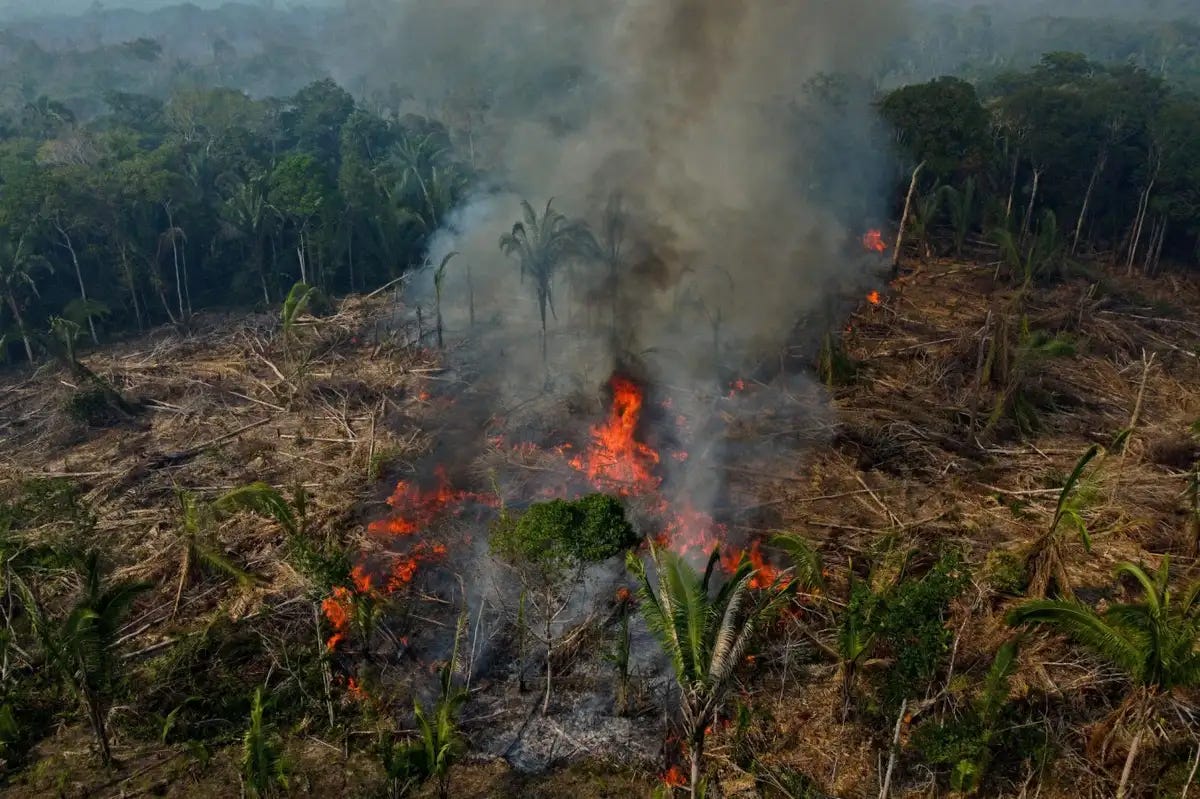The internet is a virtual space that doesn’t pollute much right?
How bad is it?
The internet is a massive contributor to emissions and pollution, and yet, there’s not a whole lot on the internet about sustainable digital design! 😱 So let’s get together and change that — starting with this conversation.
Here’s a fun fact for you:1
“1 hour of videoconferencing or streaming, emits 150-1,000 grams of carbon dioxide (a gallon of gasoline burned from a car emits about 8,887 grams), requires 2-12 liters of water and demands a land area adding up to about the size of an iPad Mini.”
Let’s talk about sustainability. A lot of content on sustainability includes ethics, accessibility, etc. and while these are absolutely important, in this article I will focus exclusively on sustainability for the environment.
The Environmental Impact of Digital Products
What’s fascinating about my recent pivot towards working with early stage climate tech startups is that I’m in new territory: digital and physical. I’m learning more about energy, materials, etc. Similarly, even when we have a digital product, there is always a physical component. Here are four ways that digital products have an impact on the environment and by extension, on humans:
Energy Consumption:
Demand for digital services is sky-rocketing. Data centers power and store the vast amount of information online. Since 2010, the number of internet users worldwide has more than doubled, while global internet traffic has expanded 20-fold. This energy consumption is mainly driven by the need for constant cooling and power to run servers. 💨 The construction, production and maintenance of data centers requires land, resources, and energy.
Carbon Emissions:
The energy that powers data centers and internet infrastructure is often generated from non-renewable energy sources such as coal, oil, and natural gas.⛽️ As you may know, the burning of fossil fuels to generate this electricity releases carbon dioxide (CO2) and other greenhouse gases into the atmosphere. Thus a reliance on traditional energy sources + increase in consumption = more climate impact.
Manufacturing and Supply Chain:
The internet is digital? Wait a sec, what’s that thing you’re reading this on? 💻📲 The production process of electronic devices, networking equipment, and other hardware components requires raw materials. This may include metals, plastics, glass, ceramics, semiconductors, and rare earth elements. The extraction, processing, and transportation of these materials contribute to environmental degradation, including deforestation, habitat destruction, and water pollution.
Electronic Waste (E-waste):
You know those people who get a new iphone every single year? 🤬 They most definitely are not doing it to kill an elephant or to pollute drinking water. Companies manufactured a need for rapid turnover of electronic devices. Of course, this results in more and consistent profit. However, the constant demand for new technology contributes to electronic waste (e-waste). This 2-3% of annual global waste includes computers, smartphones, tablets, and other devices that are discarded and end up in landfills. What’s worse, e-waste contains hazardous materials such as lead, mercury, and cadmium, which can leach into the soil and water, posing environmental and health risks.
As a result of this, the earth is changing rapidly, but we’re not making changes. At least, not fast enough. The climate impact is real and we’re seeing more droughts, wildfires, heatwaves, etc. 2023 was the warmest year on record.2
Before
After
People don’t care about sustainability
I care about sustainability. Obviously. Otherwise, this article would be really weird. 😂 As I said, my company The Craft works exclusively with early stage climate tech companies. However, as I tried to integrate sustainability into my content on Linkedin, I noticed that if I posted about sustainability, people didn’t engage. 💡
This is an interesting learning because it gives us a reality check. People are too busy and engaged in their daily life to go out of their way to focus on something that feels intangible. When you don’t visibly see or experience the impact of climate change, perhaps sustainability feels like a 6th priority in life. Even if you’re not a climate denier, you may not feel the need to actually do anything or perhaps you don’t know what to do.
Communicate like a human
So how do we work with that? First of all, let’s try communicating like a human instead of a scientist. This is what we’re currently telling people:
“The United Nations Environment Programme (UNEP) estimates that global emissions of carbon dioxide (CO2) need to be reduced by approximately 45% by 2030 compared to 2010 levels to limit global warming to 1.5°C above pre-industrial levels.3”
So what? Am I supposed to understand what that means or go spend 2 hours on research? No. Here we can apply the design saying, “don’t make me think.”
Let’s tell people how it will impact them:
Frequent wildfires
Increase in tropical storms
Droughts
Reduced agricultural yields, less food
Health impacts due to heat and pollution
Climate migration and refugees
Wow, potentially losing my home? Increased insurance rates? No food for my kids? All of a sudden this hits home a lot harder than that statement above by the UN. What do you think?
The next step is telling people what they can do about it.
Keep reading with a 7-day free trial
Subscribe to Conscious Tech to keep reading this post and get 7 days of free access to the full post archives.









